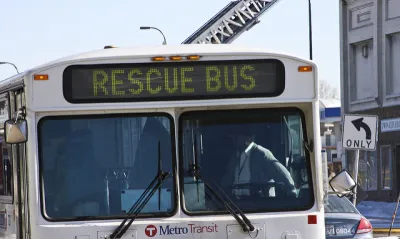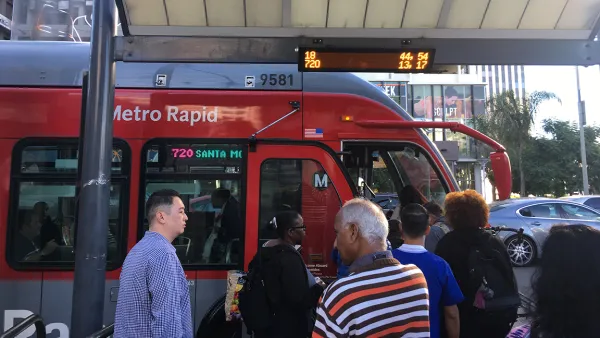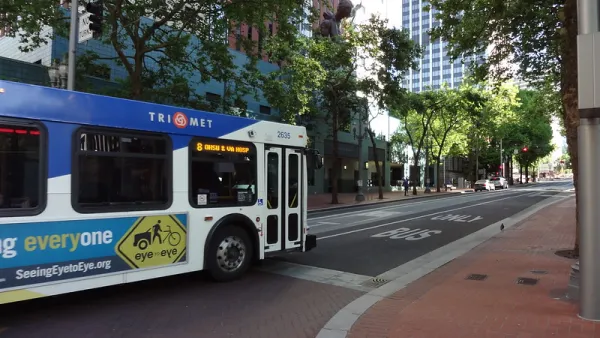While transit systems around the country had reason to celebrate the new funding made available in the federal infrastructure bill, long-term concerns about operational capacity have not been resolved.

"[The Detroit Department of Transportation] is making changes to routes across the city this week in an effort to improve service and reduce bus stop wait times," reports Eric D. Lawrence for Detroit Free Press.
C. Mikel Oglesby, Detroit's executive director of transit, is quoted in the article saying that the new schedules more accurately reflect the service currently provided, as the system "grapples with low ridership and a bus driver shortage." To minimize the inconvenience to riders, DDOT is targeting service reductions on low-ridership routes.
" [Oglesby] said DDOT is short about 90 drivers and ridership is down about 50%, from about 70,000 per day to 30,000-35,000 per day," reports Lawrence.
Bus driver shortages pre-date the pandemic—cities like St. Louis, Denver, and Minneapolis made news for cutting trips due to driver shortages in 2019, for example—but the problem has been perpetuated by the pandemic. MARTA also recently cut bus service in the Atlanta region, also citing bus driver shortages as the reason for the cutbacks.
In some respects, public transit seems to be prospering through the pandemic: Stimulus funding prevented the existential crises of Spring 2020, record amounts of new funding has been made available by the recently approved Infrastructure Investment and Jobs Act (IIJA), and a growing number of transit systems lowering or eliminating fares.
Despite those reasons for optimism, transit systems are still hanging by a thread (as reported on this site earlier in 2021): Ridership has been slow to return to most U.S. transit systems, the aforementioned driver shortages persist, and the IIJA also provided a record amount of funding for automobile infrastructure.
Most significantly to the future of public transit systems like the DDOT's, the structural deficit of transit funding for public transit operations in this country has not been resolved.
FULL STORY: DDOT to make route changes after low ridership, bus driver shortage

National Parks Layoffs Will Cause Communities to Lose Billions
Thousands of essential park workers were laid off this week, just before the busy spring break season.

Retro-silient?: America’s First “Eco-burb,” The Woodlands Turns 50
A master-planned community north of Houston offers lessons on green infrastructure and resilient design, but falls short of its founder’s lofty affordability and walkability goals.

Delivering for America Plan Will Downgrade Mail Service in at Least 49.5 Percent of Zip Codes
Republican and Democrat lawmakers criticize the plan for its disproportionate negative impact on rural communities.

Test News Post 1
This is a summary

Test News Headline 46
Test for the image on the front page.

Balancing Bombs and Butterflies: How the National Guard Protects a Rare Species
The National Guard at Fort Indiantown Gap uses GIS technology and land management strategies to balance military training with conservation efforts, ensuring the survival of the rare eastern regal fritillary butterfly.
Urban Design for Planners 1: Software Tools
This six-course series explores essential urban design concepts using open source software and equips planners with the tools they need to participate fully in the urban design process.
Planning for Universal Design
Learn the tools for implementing Universal Design in planning regulations.
EMC Planning Group, Inc.
Planetizen
Planetizen
Mpact (formerly Rail~Volution)
Great Falls Development Authority, Inc.
HUDs Office of Policy Development and Research
NYU Wagner Graduate School of Public Service




























